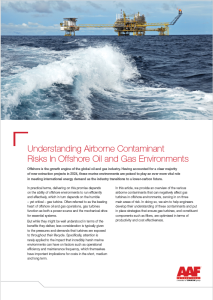Understanding Airborne Contaminant Risks In Offshore Environments
Kris Osborne
5Mins
 Introduction
Introduction
Offshore airborne contaminants protection matters more than ever for modern gas turbines. Offshore platforms are exposed to many threats, such as salt, moisture, and hydrocarbons. These contaminants can cause rapid equipment wear, unwanted downtime, and expensive repairs. As a result, protecting gas turbines is the key to maintaining performance and reducing costs. With the right solutions, operators can safeguard their assets and avoid problems before they arise.
What You Will Learn from This Article
This article explores the most serious airborne risks faced by offshore operations. Firstly, you will learn about the three main contaminants and their impact. Next, we cover why typical filtration methods fail in marine conditions. Then, discover how advanced strategies for offshore airborne contaminants protection help extend turbine lifespan and cut maintenance costs. Find out how global energy leaders can achieve success by upgrading their filtration systems.
Download our article now for exclusive insights and proven solutions from global experts in offshore airborne contaminants protection.